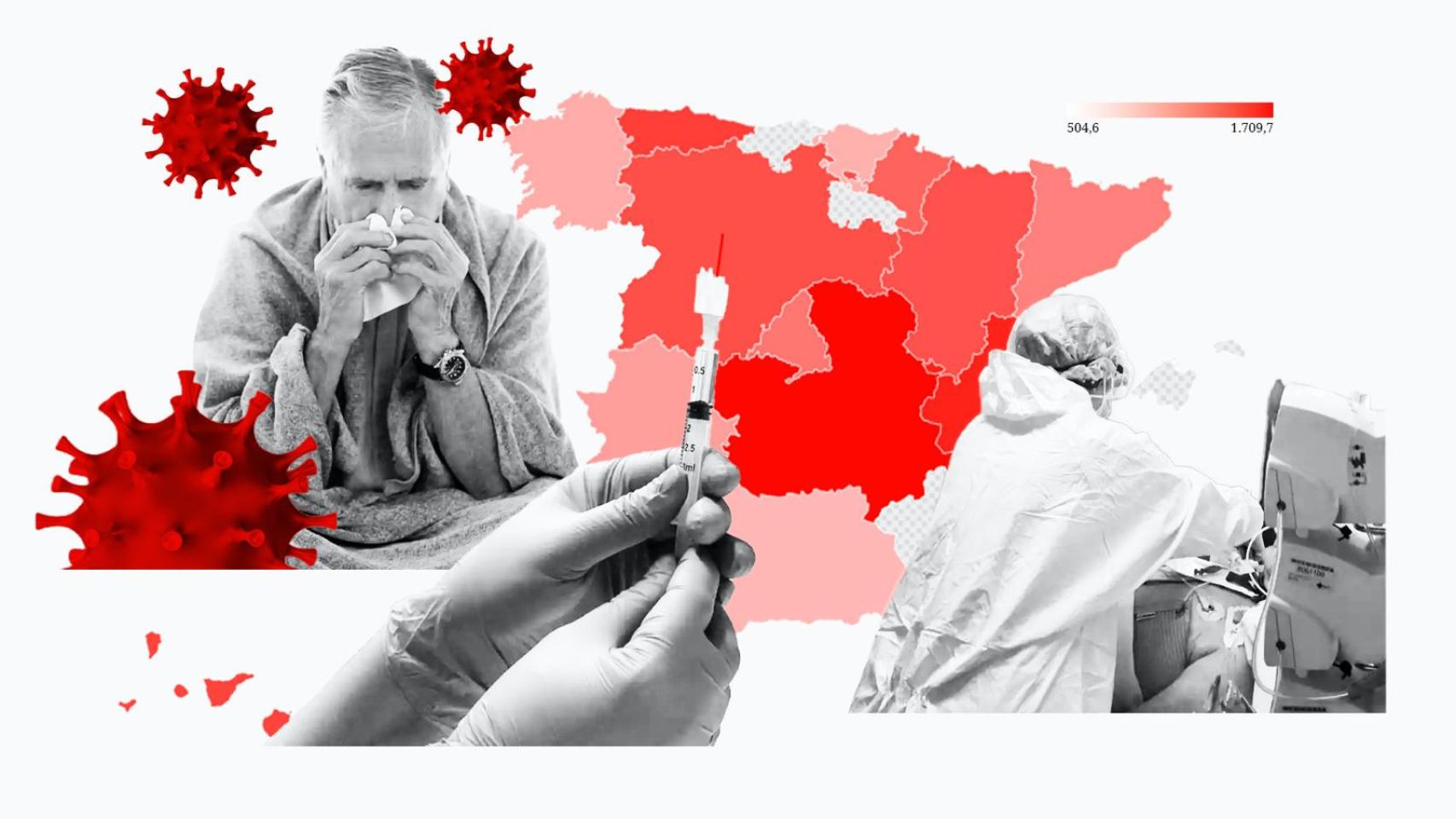Spain bids farewell to 2023 with proportion of positive influenza cases A five-fold increase in the past four weeks According to the report of the Surveillance System for Acute Respiratory Infections (SiVIRA) of the Carlos III Health Institute, the infection rate increased from 8.3% to 46% this year. However, the incidence of this respiratory infection is not the same in all autonomous regions.
From December 25 to 31, Castilla-La Mancha had the highest incidence of acute respiratory infections in the world. 1,709.7 cases per 100,000 inhabitants. This figure represents an increase of 30.8% in the Castile-La Mancha region in just one week.
This is followed by the Autonomous Region of Valencia (1,501.4), Asturias (1,318.6) and the Canary Islands (1,285.3).There are Seven communities exceed national average, that is, 952.9 cases per 100,000 people. Although in the above report, cases have not been reported in as many as four regions (Cantabria, Balearic Islands, La Rioja and Murcia region).
At the bottom are Andalusia with 504.6 cases per 100,000 inhabitants, Ceuta (550.6) and the Basque Country (553.8). How do we explain that the latter three combined do not even reach the global ARI rates of the first three?Experts doubt There are several reasons behind this difference in numbers..
Low vaccination rates
The first issue they point to is vaccine coverage. “Yes We are seeing an increase in viral infections “This is due to low vaccination rates, especially among people over 60 years old,” said María del Mar Tomás, spokesperson for the Spanish Society of Infectious Diseases and Clinical Microbiology (Seimc) and a microbiologist at the University Hospital of A Coruña, in Spanish.
(Why Spain’s healthcare collapse over Christmas won’t be solved in the ‘short or medium term’)
Although there is no official data on current activity, a survey conducted by Sanofi revealed that Only Navarra can exceed vaccine coverage target influenza —75% of susceptible groups identified— People over 65 years old.
“Navarre should be congratulated and more action should be ensured in those regions that have not yet achieved good vaccine coverage,” said Joan Caylà. Coordinator of the Barcelona Tuberculosis Research Group and former Head of the Epidemiology Service at the Barcelona Public Health Directorate. The epidemiologist recalled that achieving vaccination targets would not only benefit the health of the population but also prevent hospitals from collapsing.
Some authorities have already taken Response measures to face a large number of cases in hospitals. The last to do so is the Valencian community, which will administer flu and Covid-19 vaccines starting Monday without the need to make an appointment to any of its citizens. As in Catalonia, health centers have decreed the mandatory use of masks.This is a measure proposed by the Ministry of Health The Interregional Committee of the National Health System (SNS) will convene on Monday.
thomas Understand that citizens are tired We have relaxed after the epidemic. But that doesn’t mean we have to continue practicing the precautions we’ve learned from this: “Get vaccinated, wash your hands, wear a mask, avoid social contact if you have symptoms,” he recalled.
“Some people are wearing masks, but This is a very low percentageadded Caylà. He also believed We should learn from countries like Japan or South Korea, where the use of masks is common this time of year, even before the pandemic.
In his view, there is no clear explanation for the differences between communities: “What the ISCIII report does tell us is that Now three epidemics are happening at the same time: COVID-19, influenza and respiratory syncytial virus. He also highlighted that some people buy antigen tests at pharmacies or fail to see their GP despite experiencing symptoms. “Both of these situations can lead to under-recording of data,” he explained.
A Seimc spokesman believes another reason why some communities are more affected than others is the crowds that occur in Spain’s major cities during the Christmas period. However, the example of the Madrid Community overturns this objective. Although it is Spain’s most populous city, the incidence rate is actually the same as the national average, 951.9 cases per 100,000 inhabitants.
How morbidity will evolve
As Pascual Piñera already pointed out, vPresident of the Spanish Society of Emergency Medicine (Semes) According to this newspaper, influenza A cases currently dominate hospital emergency rooms.
A woman in the emergency room of Lucas Augusti Hospital in Lugo.
Furthermore, the coronavirus remains “fluctuating,” according to Thomas’s definition. The arrival of a new wave cannot be ruled out The latter appears when influenza decreases. “That’s why the higher the vaccination rate for both infections, the lower the health risk. This has been demonstrated with respiratory syncytial virus immunization.”
There is no doubt that in order to reduce the incidence, a so-called end of the peak must occur. For Thomas, we are at the peak of the flu season: “In Galicia we saw a decrease in the number of cases this week (January 1st to 7th).”The incidence rate is expected to continue to riseconsidering we’re expecting a cold snap,” Kayla disagreed.
In the absence of first data for 2024, one of the study’s conclusions is that Respiratory infection season means that the original peak of infection in mid-January is brought forward to the beginning of the month. “Even before the pandemic, the characteristics of the virus were different from ours,” Thomas said.
“If you look at the trends over the years, there’s been some change. It doesn’t surprise me that we’re getting the flu now,” Keira warned. Both experts agree that so-called pandemic fatigue has taken its toll: “For example, people have always believed that COVID-19 is not serious. But since March 2020, the incidence rate has been negligible.” We continue in the pandemic“, Kayla said.

